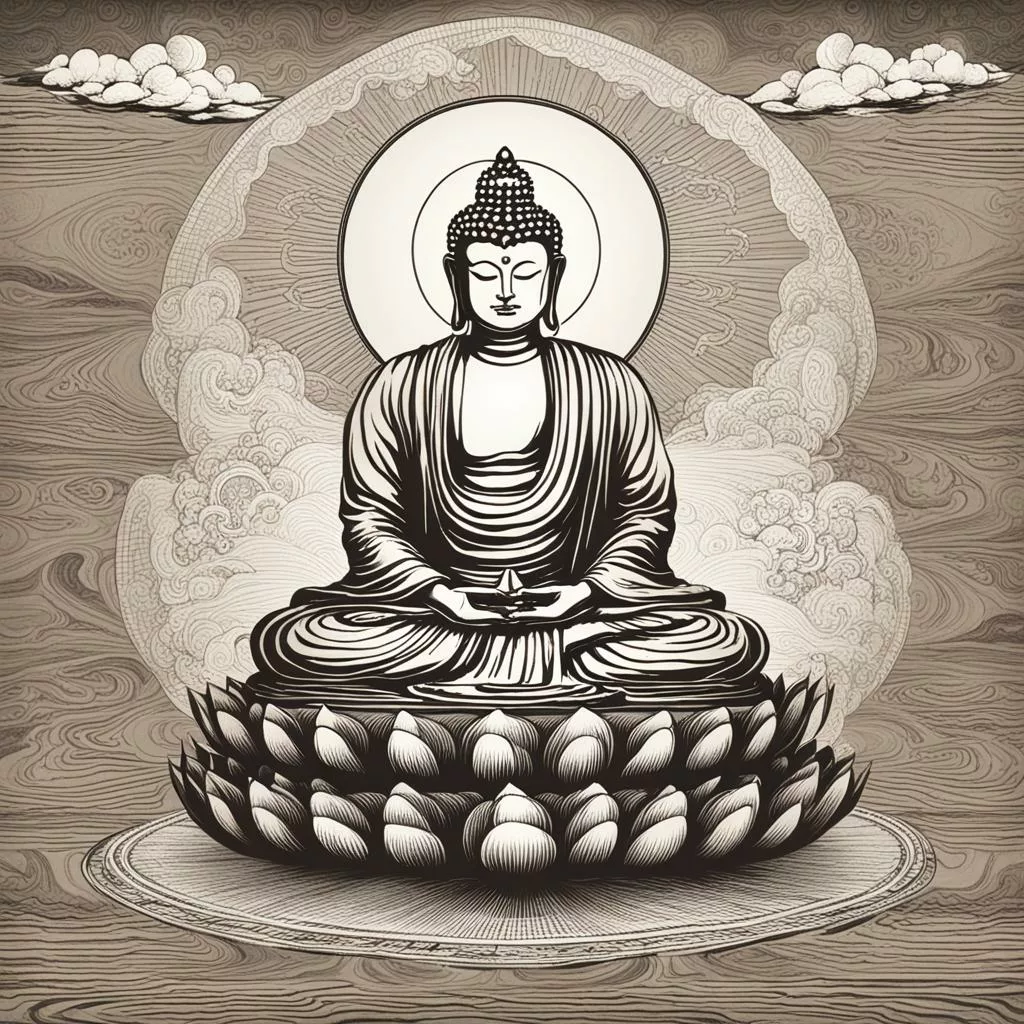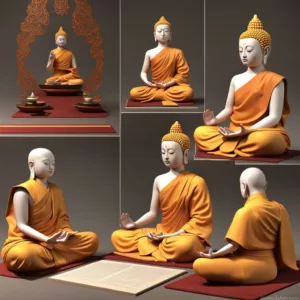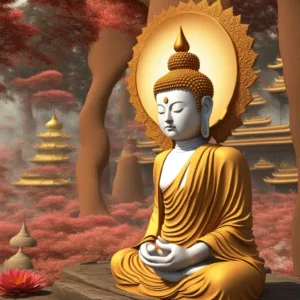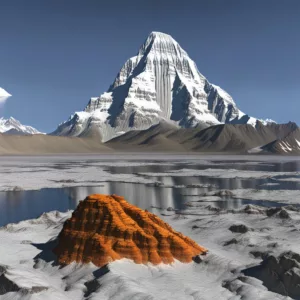
Buddhist meditation is a progressive path of meditation. The meditator increases their insight and is able to move into more subtle and profound stages in the course of the path. The culmination is the ultimate level of profound and subtle insight: Changchub.
Secrets of Meditation for Anxiety
Like millions of people, you may have suffered from anxiety for years. Meditation, yoga, peaceful music – it never works. It takes too long, and it’s not stable. Why? Because peace is treated as a cause for freedom, but it’s not – it’s the result. The cause to free yourself from anxiety is completely different.
Click now to Overcome Anxiety for good.
Table of Contents
Summary: Buddhist Meditation
- (Practice):
- Subtypes:
- Shamatha (Cultivating Calmness): Develops focused attention and tranquility.
- Vipassana (Insight Meditation): Cultivates insight into the impermanent nature of reality.
- Metta (Loving-kindness Meditation): Cultivates compassion and goodwill towards oneself and others.
- Zen (Meditation with Focus on Koans or Mantras): Emphasizes sudden awakening through paradoxical riddles (koans) or chanting (mantras).
- Advanced Practices:
- Dharani Meditation: Uses specific syllables or phrases to achieve mental clarity and spiritual qualities.
- Visuddhimagga (Path to Purification): A systematic approach integrating meditation practices for mental purification.
- Subtypes:
- Mental States:
- Mindfulness (Awareness of Present Moment): Non-judgmental observation of thoughts, sensations, and emotions.
- Concentration (Focused Attention): Sustained focus on a single object, calming the mind.
- Equanimity (Mental Balance): Maintaining emotional composure in the face of pleasant or unpleasant experiences.
- Compassion (Understanding and Sharing Another’s Suffering): Feeling empathy and concern for the suffering of others.
- Joy (Positive Mental State): Cultivating a sense of well-being and appreciation for life.
- Schools of Buddhist Meditation:
- Theravada:
- Emphasis: Individual liberation from suffering through meditation and ethical conduct (Sila).
- Practices: Vipassana meditation is central, with teachings on impermanence (Anicca), suffering (Dukkha), and non-self (Anatta).
- Mahayana:
- Emphasis: Bodhisattva ideal – achieving enlightenment for the benefit of all beings.
- Practices: Diverse practices including Zen, Pure Land (focus on devotion to a Buddha), and Tibetan Vajrayana.
- Vajrayana (Tibetan Buddhism):
- Emphasis: Utilizing mantras, visualizations, and the subtle body energy system (chakras) to achieve enlightenment.
- Practices: Complex rituals, deity yoga (visualization of Buddhas), and advanced yogic techniques.
- Theravada:
- Meditation Techniques (Expand on existing ones):
- Anapanasati (Mindfulness of Breathing): Focusing attention on the breath sensations at the nostrils or abdomen.
- Variations: Counting breaths, noting the breath as “long” or “short,” observing the breath cycle.
- Bodyscan Meditation (Observing Bodily Sensations): Systematically scanning the body and observing sensations with detachment.
- Walking Meditation (Mindful Movement): Focusing attention on the bodily sensations of walking with each step.
- Mantra Meditation (Chanting): Reciting sacred syllables or phrases to focus the mind and cultivate positive qualities.
- Types of Mantras: Seed mantras (Bija), long mantras, and Dharanis.
- Visualization Meditation: Creating mental images of Buddhas, deities, or pure lands to cultivate qualities or deepen concentration.
- Anapanasati (Mindfulness of Breathing): Focusing attention on the breath sensations at the nostrils or abdomen.
- Meditation Aids (Expand on existing ones):
- Zafu (Meditation Cushion): A firm, round cushion to elevate the hips and promote proper posture.
- Zabuton (Meditation Mat): A square mat placed under the zafu for comfort and insulation.
- Gomden: A rectangular cushion, seated higher than other cushions, designed for Westerners
- Mala (Prayer Beads): Used for counting mantras, traditionally with 108 beads.
- Meditation Timer (Optional): Helps maintain focus and regulate meditation duration.
- Meditation Apps (Modern Resource): Offer guided meditations, timers, and tracking tools.
Buddhist Philosophy:
- Four Noble Truths: The foundation of Buddhist teachings, outlining the nature of suffering (Dukkha), its cause (Craving), the end of suffering (Nirvana), and the path to end suffering (Eightfold Path).
- Eightfold Path: A practical guide for living a life free from suffering, encompassing Right View, Right Intention, Right Speech, Right Action, Right Livelihood, Right Effort, Right Mindfulness, and Right Concentration.
- Karma and Samsara: The law of cause and effect (Karma) that binds beings to the cycle of rebirth (Samsara) characterized by suffering.
Meditation Practice:
- Meditation Retreat (Intensive Meditation Session): Focused practice sessions lasting days or weeks, often in silent seclusion.
- Meditation Teacher (Guide): A qualified instructor who provides guidance, instruction, and personalized
Related Terms for Buddhist Meditation
Related Terms for Buddhist Meditation
| Category | Keywords |
|---|---|
| Core Concepts | mindfulness meditation, buddhist meditation techniques, vipassana meditation, zen meditation, meditation benefits, buddhist philosophy, enlightenment (bodhi), nirvana, karma, samsara |
| Mental States | concentration, equanimity, compassion, joy |
| Meditation Practices | anapanasati (mindfulness of breath), bodyscan meditation, walking meditation, mantra meditation, visualization meditation |
| Additional Terms | meditation retreat, meditation teacher, buddhist schools (Theravada, Mahayana, Vajrayana), meditation posture, breathing techniques |
| Broader Audience | stress reduction, mindfulness exercises, anxiety relief, inner peace |
| Niche Audience | Dharani meditation, Tibetan Buddhist practices, Vajrayana rituals, koans |
| Search Intent | how to meditate, beginner’s guide to meditation, meditation apps, what is vipassana |
| Advanced Search Intent | Vipassana retreat locations, qualified meditation teachers, Buddhist meditation traditions |
Buddhist Meditation
The primary focus of Budhist meditation is on wisdom and the accumulation of merit. Merit and wisdom are like the left and right legs. The accumulation of merit, which is a type of karma that transcends ignorance, allows one to walk the path of wisdom. The accumulation of wisdom allows one to more easily and swiftly gain merit. This positive feedback has a multi-level progression, and one can continue it through the stages of meditation on emptiness. Or one can think of it in terms of the nine yanas progression.
3 Yanas of Buddhist Meditation
In short, discussing Buddhist Meditation just from the three-yana perspective:
Hinayana Buddhist Meditation
Hinyana is the meditative path of seeing the selflessness of the individual. This is done by taking refuge in the Buddha, so that one has some sense of trust or confidence in the path, and then studying the teachings of the Buddha on selflessness, especially karma and the skandhas. After contemplating these teachings, the student meditates on them, attempting to see them as the reality of their existence, or seeing if they are not real.
Mahayana Buddhist Meditation
In Māhayana, emptiness is seen directly. Emptiness is the idea that phenomena have no particular essential characteristics. They are empty of themselves. It is helpful to study the madhyamaka, and to meditate directly upon this, contemplating the ineffability of causality of physical forms, the detachment of meaning from words, and the unreality of time.
Emptiness is also applied to the absolute. The absolute can be seen in two ways, as being empty of itself, rangtong. This is a conceptual viewpoint, which can be used to eliminate all false viewpoints. It can also be meditated upon as shuntong, which is empty of other. This means it’s empty of all concepts about reality whatsoever, but it is not empty of itself. It has its own being. This is the Buddha-nature approach. It also can be called luminosity.
Vajrayana Buddhist Meditation
In the Vajrayana, the view is somewhat similar to the māhayana. It is more tilted towards the ideas of the idea of Buddha-nature and the luminosity, and less toward the idea of emptiness. Emptiness can be seen as a trap to pull one into a nihilistic frame of mind. But the idea of emptiness becomes closer to the purity. Nothing is pen-downable, but it is pure in its own essence. Its own nature is pure at the deepest level.
In the vajrayana, meditation is used in a variety of different ways, and this is where meditation comes into its own. Practitioners will meditate on many different forms of light and deities, both external and self-visualizations, in order to accumulate merit. They’ll meditate about making vast offerings, about taking refuge with millions of bodies, and the bodhisattva vow. They will visualize sending out huge generosity to other beings, so that they have abundant things in their lives, and making massive cosmic offerings to the Buddhas, and receiving the merit. This merit of generosity and non-attachment is in use to walk the path of wisdom, and that goes back and forth like that from this perspective.
Vajrayana is essentially a means to dramatically accelerate the Mahayana. There’s also the special characteristic of the pointing out the nature of mind and the blessings, which are connected. The Guru is essential in this: the Guru points out the nature of the mind to the student. The student also meditates upon the Guru in a perfected form as the Sambhogakaya, or other gurus, or a universal mind guru. There are many different ways to do this.
That Guru then blesses the practitioner. These blessings increase the propensity to look toward wisdom, and they help the mind refine the understanding of wisdom. They help you see what is being taught. So you gain a lot of blessings by meditating in this way, that you’re constantly receiving blessings from the Guru, and by expanding the idea of the Guru to include all of phenomena and the essential nature of your own mind, and the blessings become a continuous stream.
By doing so, the mind opens itself to wisdom more and more. This eventually leads to very subtle meditations of overcoming the dualistic barrier, so that there’s no longer a separation between oneself and the world. It’s just a single thing. That single thing is the luminous but empty wisdom mind. It can be the vast expanse of reality. It can be described in many different ways, however, it’s all the same thing. It’s simply the suchness of reality.
Once the practitioner gets to the point of being able to directly access that, many of the other meditations will drop away, and they will tend to rest more and more just in the suchness, just in the emptiness. This is called the three words that strike the vital point. Seeing the nature directly, attaining confidence that’s what you’re seeing is valid, and stabilizing that perception. Once that is completely stabilized and united with the mind, and there is no longer any part of the mind that it carves out its own separate space, then we’re close to enlightenment.

May all beings be happy
May all beings be peaceful
May all beings be safe
May all beings awaken to the light of their true nature
May all beings be free








